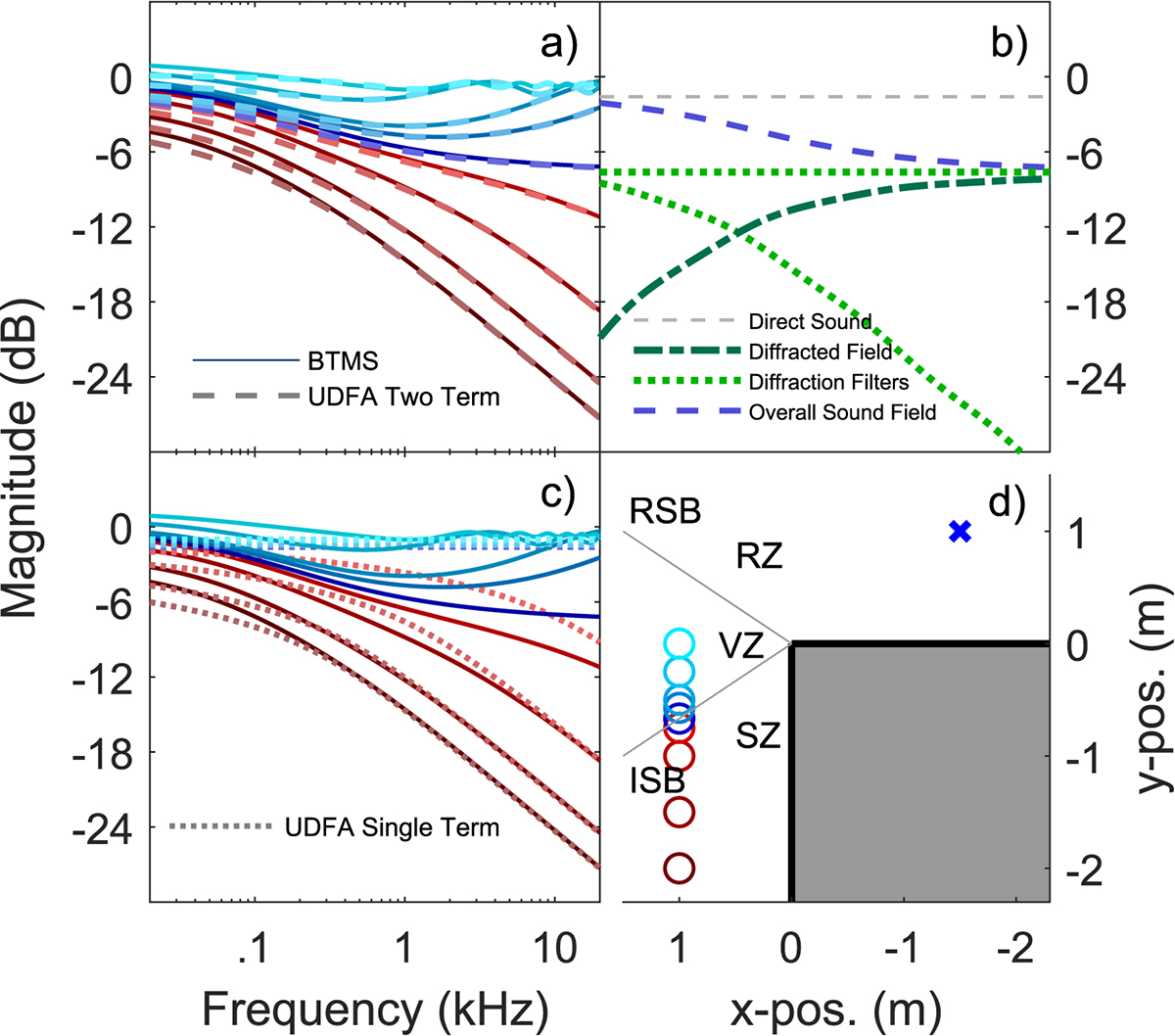Figure 2

Download original image
Magnitude transfer functions of the sound field at an infinite square wedge for different receiver positions indicated in panel d). The BTMS reference is shown as thin solid traces in panels a) and c). Panel a) and c) show the UDFA two-term and single-term approximation (colored, dashed and dotted traces), respectively. Panel d) shows the wedge (shaded, view in z-direction), the sound source (blue cross), and receiver locations (circles, color coded) matching a) and c). The incident shadow- and reflection shadow boundary (ISB, RSB) are indicated by thin grey lines, separating shadow zone (SZ), view zone (VZ), and reflection zone (RZ). The transition between SZ and VZ is shown in detail in panel b) for the UDFA two-term approximation. The blue, dashed trace is a replot from panel a) and shows the overall sound field at the ISB. The grey, dashed flat trace corresponds to the geometrical direct sound. The green, dotted traces correspond to the individual diffraction filters. The dark-green, dash-dotted trace is the sum of both diffraction components with the phase of one component inverted.
Current usage metrics show cumulative count of Article Views (full-text article views including HTML views, PDF and ePub downloads, according to the available data) and Abstracts Views on Vision4Press platform.
Data correspond to usage on the plateform after 2015. The current usage metrics is available 48-96 hours after online publication and is updated daily on week days.
Initial download of the metrics may take a while.


